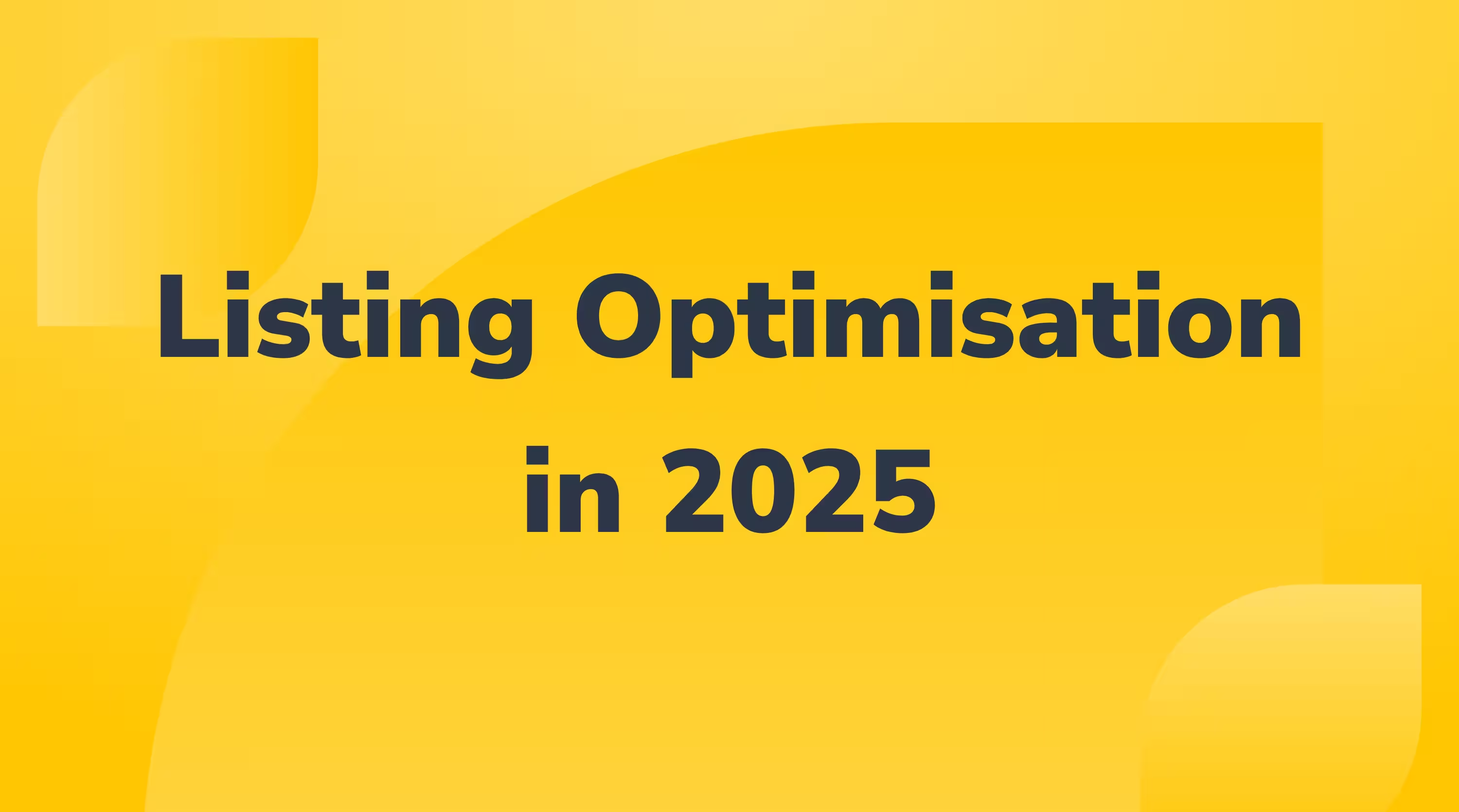Amazon Dictionary: Detail Page Sales & Traffic by Child Item Report

As an Amazon seller, you may have familiarised yourself with the business reports, found in Seller Central. These reports offer data for sellers to analyse key aspects of their businesses. You can find the business reports located under the main tab > reports> business reports.
Although useful, the amount of data in rows and columns often proves overwhelming, with most sellers choosing to ignore these reports as a result. Our advice? Don’t let this be you.
What makes the business reports useful?
If there’s one thing for sure, the best way to grow your business is with actionable data. Intuitive instincts simply won’t suffice when it comes to selling products online. If you’re not utilising these reports and analysing crucial metrics of your Amazon business, this can be detrimental to your business growth, with these reports providing valuable intel on how customers interact with your products and how often they buy your products.
Business Reports: Detail Page Sales and Traffic by Child Item Report
If you’re wanting to dive into key performance metrics, the Detail Page Sales and Traffic by Child Item report is an insightful resource to investigate into seller page views, conversation rates, total sales, and daily Amazon sales- just to name a few.
This report shows both parent-level and child-level ASIN data, meaning you get a detailed performance report at a product level. You can also find granular level data for product reporting for a customised date range.
In order to make the most out of this report, possessing a know-how on reading and interpreting its data is key. We have broken down definitions of each key term in the Detail Sales Page and Traffic by Child Item report in simple terms to make it easier to understand.
Sessions – Total
The number of unique visits to an Amazon page by a user within a 24-hour period. In simple words, this metric refers to tracked traffic.
When a customer enters your Amazon store, views multiple pages, interacts with different pages, it is considered one session. However, the session expires after a 24-hour period.
Let’s suppose a customer visits your Amazon store page. While on your page, they viewed two products and only added one unit to their basket. They browsed, viewed more products, added one or two of them, and removed them.
In this example, the customer interacted with your product and Amazon store in multiple ways (page views), however, all these actions come under one single session.
Using the Sessions metric:
In general, page views amount to more than sessions. If they were to be equal, it shows that the products do not hold visitors’ interest. It means that they were looking at one specific product and left the store after that. If few are interested in your products, you must understand why, as otherwise you cannot expect a high conversion rate.
Use this opportunity to make necessary improvements to your products and grow your page views and sessions. Here are a few things you can consider:
- Check if the listing is placed under the appropriate category.
- Does the title have relevant keywords?
- Do the images comply with Amazon’s guidelines?
- Are your products priced strategically?
Order Session Percentage (Conversion Rate)
The Order Session Percentage metric compares the number of orders placed and the number of unique sessions your store got from the customers.
If your Amazon store receives 50 visitors and 25 of them placed orders with you, your order session percentage would be 50% (25 divided by 50). If 4 out of 5 visitors placed an order, the order session percentage would be 80%.
A good conversion rate on Amazon can be anywhere from 10-15%, so do try to achieve the average 9.7% conversion rate. However, these numbers may vary slightly with the category in which you are selling.
How to use Order Session Percentage?
If you notice a drop in your order session rate, or your order session rate is lower than the category average, it’s imperative that you take actionable steps to fix this before things get worse. When this happens, it’s highly likely that your product ranking is low. The solution to this? Finding the right keywords for your listing.
If you’re unsure on which keywords to use, feel free to get in touch with our copywriting team to boost your organic rankings and have your listings embedding top and relevant search terms.
Page views - Total:
Page views shows the total number of visits to your offer pages for a selected period time (a session), not only the unique number of page visits. As such, a user may view your offer pages multiple times within a single time period, resulting in a higher number of page views than sessions.
When a child ASIN is visited, it does not also count as a visit to the parent ASIN. When viewing the ‘Detail Page Sales and Traffic’ report, page views are summed only for days when there was sales activity on the ASIN. Page views are also summed for the entire date range, regardless of sales activity.
What you can do with this data:
Track and determine whether page views are increasing, decreasing or staying stagnant to form solutions if necessary. If page views are down, your products are being shown to a smaller audience.
Why you aren’t gaining views:
First, see if you are winning the Buy Box. In addition to this, ensure your product listing titles have relevant high-volume keywords and images that work well. In general, more traffic means better conversions, which in turn leads to better rankings, so it is important to keep track of page views. [SSH1]
Page Views Percentage – Total
The % of total page views this child ASIN accounts for.
Buy Box Percentage (Featured Offer)
The percentage of page views where the Featured Offer appeared on the page for customers to add your product to their cart. If the buy box percentage is high, it means that you are winning the buy box frequently; a good sign as it improves your sales and rankings. However, if your product is out of stock or loses the buy box to another seller, it impacts your sales and page views.
Improving the Buy Box percentage
If the percentage is low, your product may be either out of stock or you lost the buy box to a competitor. There are also certain factors such as price, customer service, shipping, etc. that influence the chances of winning, so make sure to keep on top of things to maintain the buy box.
Units Ordered
The number of units ordered! The units ordered metric reflects the total number of products that customers ordered, and directly influences your product ranking on Amazon. If you sell more units, you rank higher in Amazon’s search results.
Units Ordered B2B
Like units ordered, the units ordered B2B metrics reflects number of units ordered by business customers.
Ordered Product Sales
Ordered product sales refers to the total revenue from products ordered during a selected time period. It is the price of the item multiplied by the total number of units ordered that equates a total sales figure. Here, gross product sales include your product sales plus additional costs such as the shipping costs, gift wraps costs, etc. In short, it is the price the customer spent to get the product, not just the price of the product.
With this information, you can track total product sales both with and without additional costs to reach both net and gross sales figures, helping you to make sense of profits.
As an Amazon seller, you might be aware that revenue is one of the major factors influencing your product ranking. Comparatively align your total sales with units sold, page views, and sessions to get a clear picture of your business performance and birds-eye view on where your business stands and why.
Ordered Product Sales B2B
Total revenue from business sales.
To conclude, if you want to push your growth forward, it is imperative that you know how to read Amazon’s Business reports, and in this case, the Detail Sales Page and Traffic by Child Item report, with deep understanding of what each metric means. Although it may take a bit of time to know the most helpful metrics for your business as every seller has different needs, we hope to have provided you informatively concise introductions to the report’s metrics to make this navigation a tad easier.
Still not sure how to read Amazon’s reports? Contact Sitruna today and allow us to breakdown your metrics to help you understand your store’s growth and how to optimise it so we can get your business – if not already – booming in no time!



